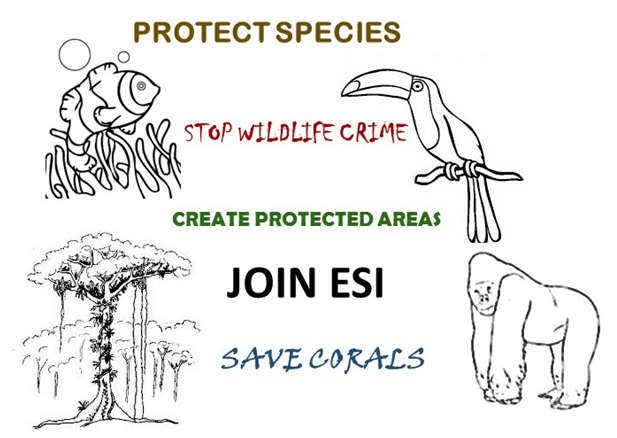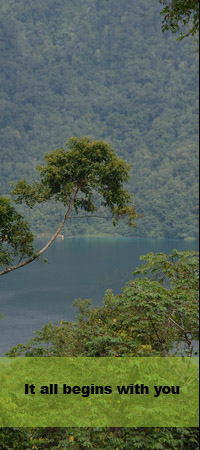CONSERVATION SUCCESSES
From elephants to corals, Endangered Species International (ESI) fights to secure a future for all animals on the planet we all share. At a time when many animal and plant species are on the verge of extinction around the globe and their habitats removed, ESI passionate individuals and groups are dedicating themselves to protect threatened species, wild nature, and support local communities. Our work including the one of many others groups to protect animals and wilderness is good news. Below we share our good news and progress for plants, animals, wilderness and for ourselves!
WILDLIFE
Eight species of threatened seabird have begun to recover on Macquarie Island, reversing 130 years of death and destruction. The island has been formally declared pest-free, five years after the last rabbit was killed. Macquarie Island is 1,742km south of Tasmania.
After a century of decline, wild tigers are slowly on the rise. In Nepal, wild tigers account for about 200 individuals (2013 data), a 63% increase from the last estimate in 2009. Surveys in India and Bhutan show an increase in tiger populations as well from 1,411 in 2006 to 2,226 in 2014. In Bhutan alone, the last tiger surveys revealed a tiger population of 103 individuals. Overall, at least (but only) 3,900 tigers remain in the wild, and much more work is needed to protect this species that’s still vulnerable to extinction. Habitat rehabilitation and protection, effective anti-poaching measures, and monitoring of wildlife movement are the keys for tiger survival.
ESI conservation efforts are making a real difference for gorillas and many other endangered primates. No gorillas were poached in our project area in the Republic of Congo. Further, we have observed heathy gorilla groups including infants at numerous occasions throughout 2016 using camera traps and surveys. This is a strong testament that our conservation work has reversed decades of gorilla hunting and decline in some part of Congo.
RAINFOREST
Today tropical forest cover stands at two billion hectares, an area about the size of the United States plus China and representing around 13 percent of the world's land surface. Much of this remaining area has been impacted by human activities and no longer retains its full original biodiversity. Tropical rainforests affect the daily lives of every person on the planet, protecting and restoring rainforest is a priority of this 21st century.
The Democratic Republic of Congo has signed a landmark agreement with donors to help protect the world’s second-largest rainforest and implement sustainable development policies. This is an significant development toward protecting the rainforest of the Congo Basin.
ESI supports the global pledge to restore 350 million hectares of degraded forest by 2030. ESI has been planting thousands of rare trees on a monthly basis, restoring tropical forest and mangrove. ESI also fights hard to protect vast areas of lush and magnificent rainforest against unacceptable palm, avocado, or pineapple plantations.
OCEAN
Last month, two dozen nations and the European Union have agreed to set aside 965,600? square kilometers of ocean for protection near Antarctica in the Southern Ocean creating the world’s largest marine park. ESI has supported the creation of this huge marine protected area since the start of the negotiations which is home to unparalleled marine biodiversity and thriving communities of penguins, seals, whales, seabirds, and fish. Further, ESI is proposing and supporting the creation of a large marine protected in the Scarborough Shoal in the Coral Triangle within the disputed sea between China and the Philippines. The proposed marine park would represent a heaven for marine biodiversity allowing fish populations to recover and providing a peace zone for all nations. ???
Our coral reef protected areas located in the Coral Triangle are resilient and flourish with a multitude of corals and fish. They harbor more than 200 coral species and countless fishes including five species of sharks. With your support, we plan to amply our effective coral reef conservation work in 2017..
PROTECTED AREAS
Together with many conservation partners and governments, ESI works to create effective protected areas safeguarding forests, wetlands, grasslands, and oceans. ESI has already succeeded in creating several natural protected areas securing critical habitats for many threatened species and thousands of wild animals. The number of protected areas around the globe has increased in the last 20 years. Today, protected areas cover around 15.4 percent of the world’s land area and 8 percent of the global ocean area. The number of designated protected areas rose between 1990 and 2016 from 13.4 million km2 to 34 million km2 of the total area covered. ESI has contributed to the global effort to expand safe haven for nature.
IT ALL BEGINS WITH YOU
Every hectare we protect, every river kilometer restored, every species brought back from the brink, begins with you. Your support will help make a lasting difference where we actively work.
Links

|









